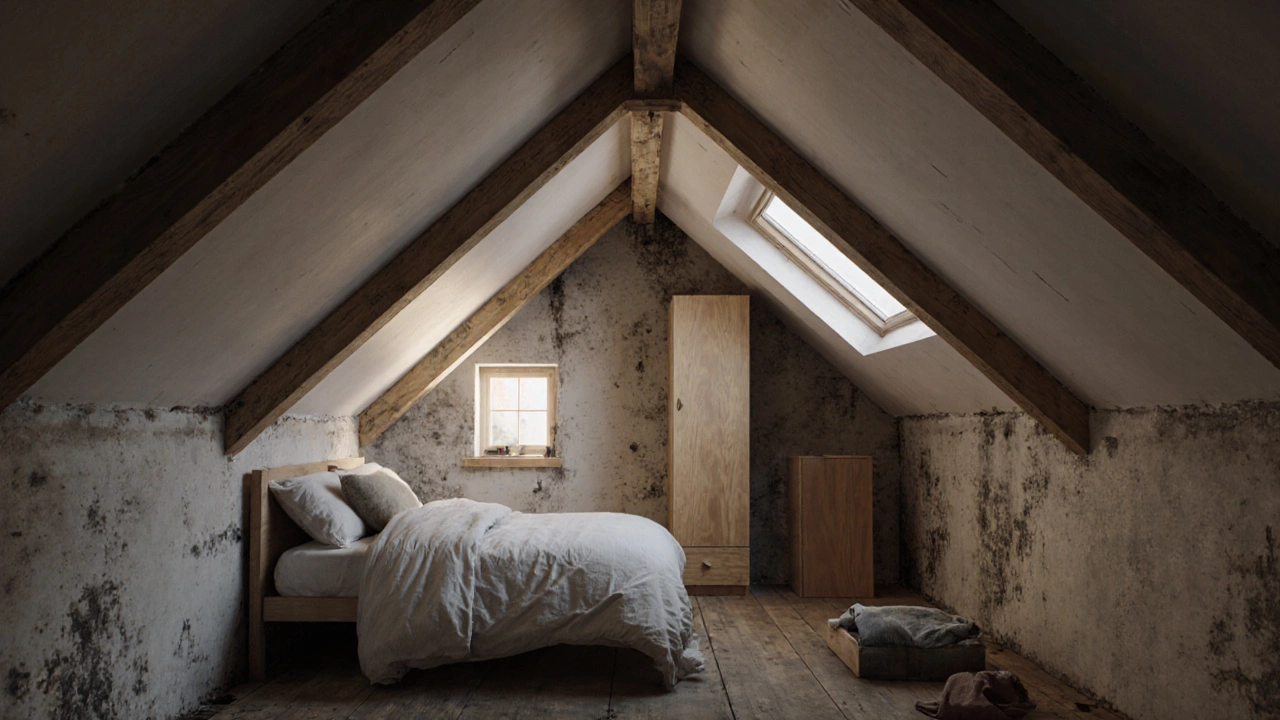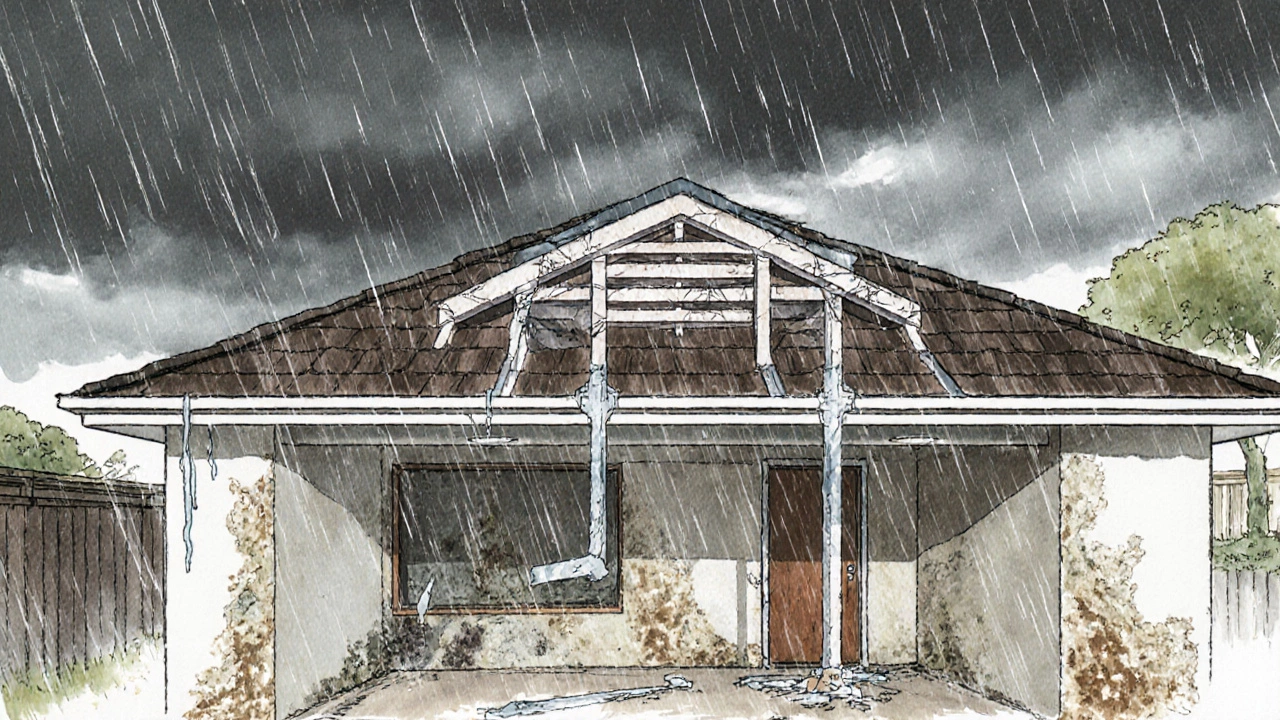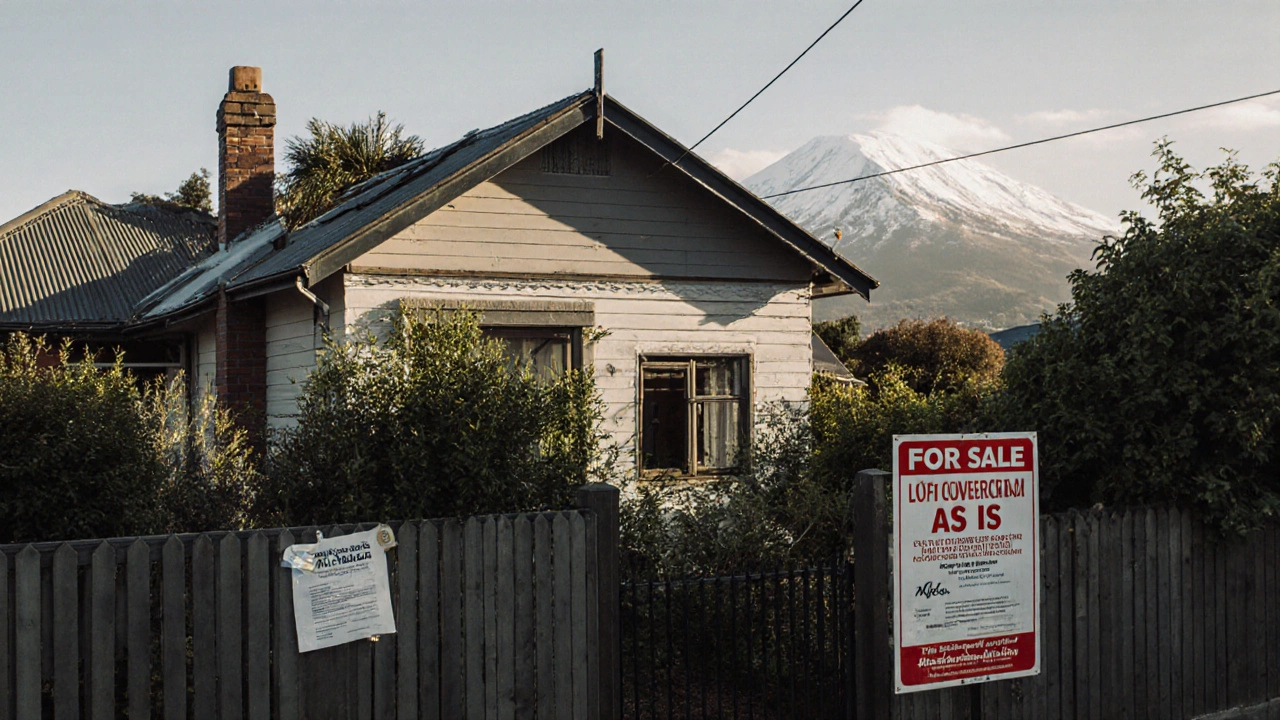What Are the Disadvantages of Loft Conversions? Common Pitfalls and Hidden Costs
 Nov, 15 2025
Nov, 15 2025
Loft Conversion Cost Calculator
Calculate Your Loft Conversion Costs
Estimate real costs including structural work, legal fees, and hidden expenses based on Wellington-specific conditions.
Estimated Costs
Base cost: $0
Structural work: $0
Insulation: $0
Storage loss: $0
Total: $0
Loft conversions look tempting-turning unused attic space into a bedroom, home office, or guest suite sounds like free square footage. But what you see in glossy magazines isn’t always what you get on site. In Wellington, where older homes dominate the suburbs and rain is a daily concern, loft conversions come with real, measurable downsides that many homeowners don’t plan for until it’s too late.
Headroom and Space Limitations
Not every loft is big enough to be useful. Many homes built in the 1950s to 1970s have low-pitched roofs with just 1.8 meters of clearance at the center. Even after raising the roof or installing dormers, you might end up with a space where you can’t stand upright near the walls. That means your bed, desk, or wardrobe gets squeezed into a narrow triangle. A 2023 survey by the New Zealand Building Code Authority found that 42% of loft conversions in older Wellington homes had less than 2.1 meters of usable headroom in more than half the floor area-making them legally non-compliant as habitable rooms under Part 2.4.1 of the Building Code.
What does that mean for you? You can’t legally list it as a bedroom on a real estate listing. Buyers will notice. And if you ever sell, your valuation could drop because the space doesn’t count as legal living area.
Structural Challenges and Hidden Costs
Most people think a loft conversion is just about adding stairs and insulation. It’s not. The existing roof trusses in older homes were never designed to carry the weight of a floor, furniture, and people. You’ll need to replace them with stronger steel or laminated timber beams. That’s not a $2,000 job-it’s often $15,000 to $25,000 just for structural reinforcement.
Then there’s the insulation. Wellington’s damp climate means condensation is a silent killer. If you skip proper vapor barriers or use cheap insulation, you’ll get mold behind the walls within two years. One homeowner in Miramar spent $18,000 on a conversion, only to find black mold growing under the floorboards six months later. The fix? Tear it all out and start again.
And don’t forget the roof. Many conversions require new roofing materials to match the rest of the house. If your original tiles are discontinued (which they almost always are), you’ll pay 30% more for matching replacements-or settle for a mismatched look that lowers curb appeal.
Staircase Space and Safety Issues
Where do you put the stairs? That’s the question no contractor will tell you upfront. A standard staircase needs at least 2.5 meters of floor space and a minimum width of 800mm. In many Wellington bungalows, that means eating into your kitchen, hallway, or living room. Some people try to save space with steep, narrow stairs-only to regret it when they’re carrying a mattress up or a toddler starts climbing.
New Zealand’s Building Code requires staircases to have a maximum pitch of 42 degrees and handrails on both sides. Most DIY conversions fail this test. And if you’re planning to rent the space later, you’ll need to meet accessibility standards-even if it’s just for a guest room. That means wider stairs, non-slip treads, and proper lighting. All of it adds up.

Planning Permission and Legal Risks
Loft conversions in Wellington often fall into a gray zone. Some are classified as “permitted development” if they don’t extend beyond the roofline. But if you add dormers, change the roof shape, or increase the volume by more than 10%, you need a building consent. And even then, the council might reject it if your property is in a heritage area or has a protected view corridor.
One couple in Karori spent $12,000 on plans and engineering reports, only to be told their conversion would block their neighbor’s view of Mount Kaukau. They had to scrap the entire design. And if you proceed without consent? You could face fines, forced removal, or a requirement to re-sell the property with the conversion disclosed-which kills resale value.
Loss of Storage and Insulation
Before you start, check your attic. Odds are, it’s where you store holiday decorations, suitcases, and old books. Converting it means losing that space. And replacing it? You’ll need to build external sheds, rent storage units, or cram items into the garage-adding $500 to $2,000 in hidden annual costs.
Plus, the insulation you install in the loft now replaces the natural insulation that the old attic floor provided. Many homes had loose-fill insulation between joists. Removing that to install a floor can reduce thermal performance unless you add extra layers underneath. That’s another $3,000 to $6,000 you didn’t budget for.

Weather and Noise Problems
Wellington is windy. Really windy. And a loft conversion turns your top floor into a wind tunnel. Even with good insulation, you’ll hear the rain drumming on the roof louder than ever. If you’re trying to use it as a bedroom or study, that constant noise can drive you crazy.
And heat? Lofts get hot in summer and cold in winter. Without proper ventilation and thermal mass, temperatures can swing 10°C in a single day. One homeowner in Hataitai installed ceiling fans and a ducted heat pump just to make the space bearable in January. That’s $7,000 extra.
Resale Value Isn’t Guaranteed
Just because you added a room doesn’t mean buyers will pay more. In Wellington’s current market, a well-executed loft conversion might add 5% to 8% to your home’s value-if it’s done right and meets code. But if it’s cramped, poorly insulated, or lacks proper stairs, it becomes a liability. Buyers see it as a renovation risk, not an upgrade.
Real estate agents in the region say homes with unpermitted or substandard loft conversions take 30% longer to sell. And if a buyer’s inspector finds structural issues or mold, they’ll demand repairs or a price cut. That’s not a profit-it’s a financial trap.
When a Loft Conversion Isn’t Worth It
There are better ways to gain space. A single-story extension, a backyard studio, or even converting a garage often cost less, add more usable square footage, and don’t come with the same headaches. If your roof is low, your budget is tight, or you’re not planning to stay in the house for at least five years, a loft conversion might not be the right move.
Ask yourself: Is this space going to be truly useful every day? Or is it just a dream from Pinterest? The reality is, most people use their loft conversion for storage within two years. Don’t spend $50,000 on a glorified closet.
Are loft conversions legal in Wellington?
Yes, but only with a building consent if you’re changing the roof structure, adding dormers, or increasing the volume. Even small changes can trigger consent requirements. Always check with the Wellington City Council before starting work. Unpermitted conversions can lead to fines, forced removal, or problems when selling.
How much does a loft conversion cost in Wellington?
A basic conversion starts around $40,000, but most cost between $60,000 and $90,000. That includes structural work, insulation, stairs, windows, plumbing, and electrical. If your home is older or needs major repairs, expect $100,000 or more. Many homeowners underestimate these costs by 30%.
Can I use my loft as a bedroom?
Only if it meets the Building Code’s minimum standards: 2.1 meters of headroom over at least half the floor area, a compliant staircase, proper insulation, ventilation, and emergency egress. Most older lofts don’t meet these without major upgrades. If it doesn’t, you can’t legally call it a bedroom.
Do loft conversions increase property value?
Sometimes. A well-built, code-compliant loft conversion can add 5% to 8% to your home’s value. But if it’s poorly done, cramped, or unpermitted, it can reduce value. Buyers often see them as risky investments. In Wellington’s market, a converted loft with mold or structural issues can cost you more than it gains.
What are the biggest mistakes people make with loft conversions?
Skipping structural assessments, ignoring insulation and moisture control, underestimating staircase space, and proceeding without council consent. Most people focus on looks and forget function. The result? A space that’s uncomfortable, unsafe, or illegal. Always get a structural engineer and a building consultant involved before you sign a contract.
